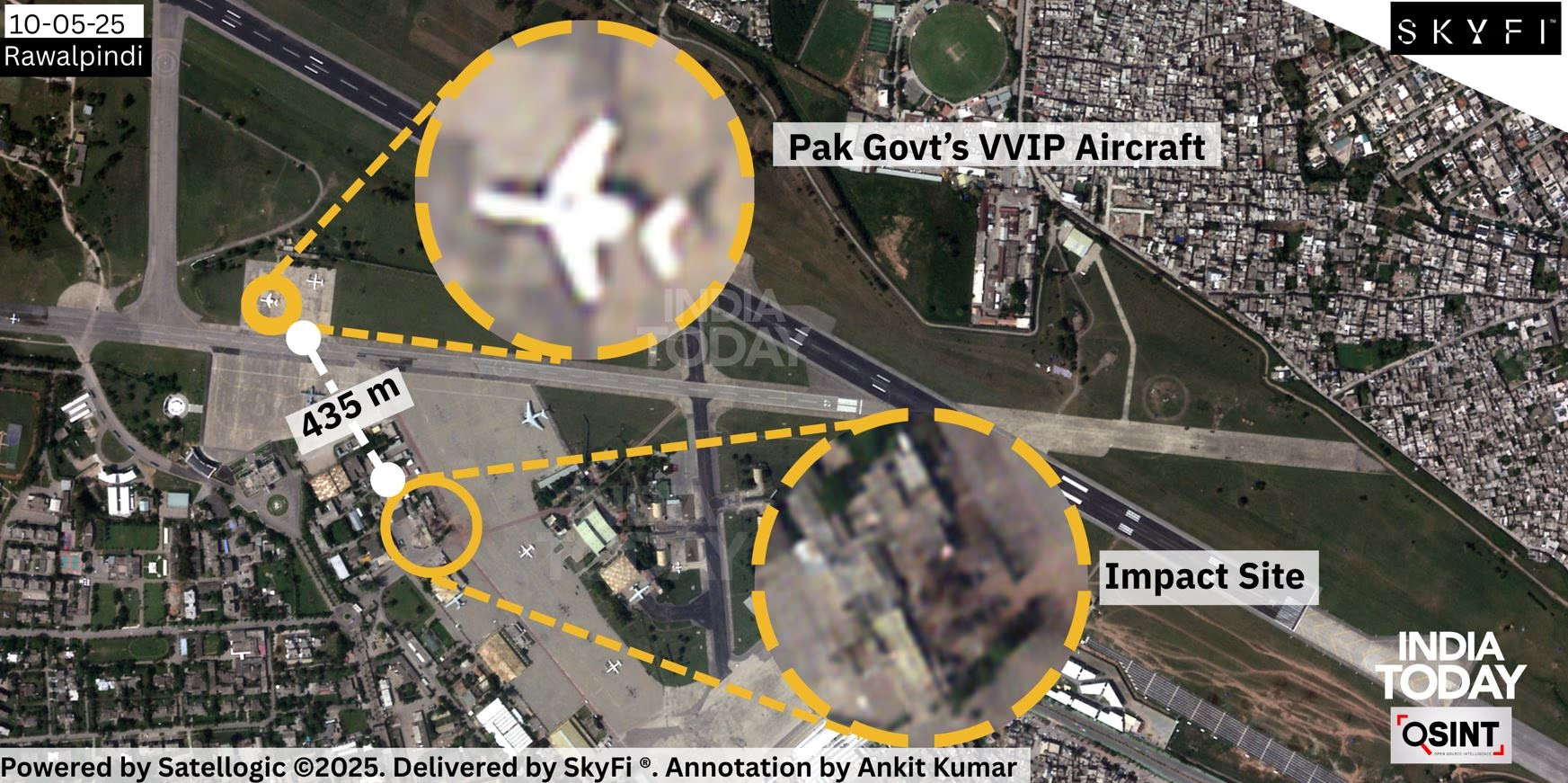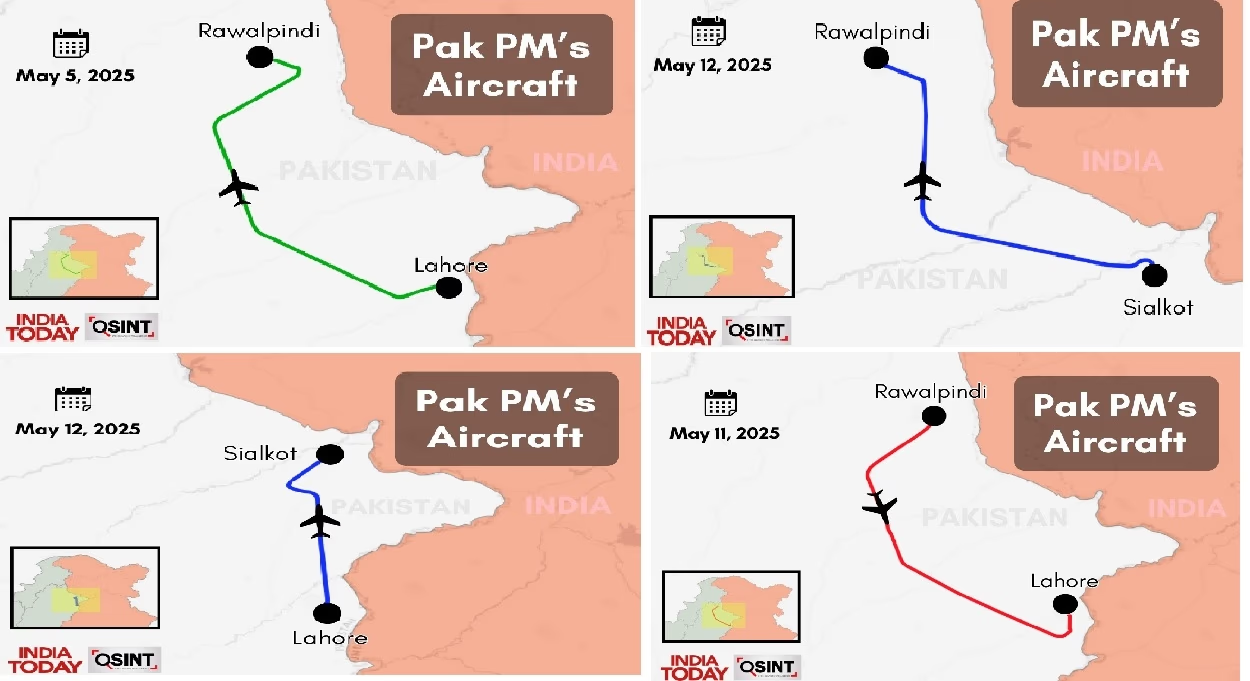India Today's Open Source Intelligence (OSINT) team has analyzed flight tracking data and exclusive satellite imagery revealing that a VVIP aircraft matching that of Pakistani Prime Minister Shehbaz Sharif was present at the Nur Khan Airbase during the Indian Air Force attack on May 10. This highlights the strategic sensitivity of Pakistan's most important airbase.
Was the Pakistani PM's Plane at the Airbase?
Located near Islamabad, Nur Khan Airbase aids Pakistani Air Force operations and serves as a hub for the country's top VVIP air transport. Satellite images provided exclusively to India Today by Satelogic via the Earth Intelligence platform
unveil new information about the events at Pakistan's high-profile airbase.
Images confirm that on May 10, a plane matching the specifications of a white G450 (G-IV-X) stood approximately 435 meters from the missile impact site at Nur Khan Base. The Pakistani government primarily uses white Gulfstreams for the Prime Minister, President, and Foreign Ministers. Satellite imagery indicates that the Indian Air Force targeted the Rawalpindi airbase, damaging a command and control unit.

Source: aajtak
Movement Secures Aircraft Identification
The photographed aircraft aligns with the profile of Pakistan's VVIP transport. Its length, tail size, and rear engines are noteworthy. Unlike the blue tail used by Pakistan Army's aircraft and frequently by Army Chief Asim Munir, this aircraft lacks such features.
Subsequent movements of the aircraft secure its identification. On May 12, the aircraft flew from Lahore to Sialkot using the PAK02 call sign, customarily reserved for the Prime Minister. The destination and timing match the publicly announced itinerary of the Prime Minister. Two days later, on May 13, the same aircraft used the PAK03 call sign to depart for Beijing, aligning with the Foreign Minister's travel schedule.
Pakistan operates three Gulfstreams for VVIP usage. During the Indian Air Force strikes, data indicates that two Gulfstreams may have been present at the Nur Khan Base, while one was deployed in Lahore. However, satellite imagery captured hours after the attack reveals only one aircraft at the Rawalpindi base.

Source: aajtak
Fuel Tanker Activity Post-Attack
The same satellite imagery indicates the presence of an II-78 air fuel tanker at Nur Khan post-attack, suggesting active military operations continued despite the Indian strike. The II-78 is a critical asset for in-flight refueling and highlights capability for deep strikes by fighter aircraft.
These insights shed light on Pakistan's swift request for a cease-fire on May 10. Knowledge of the presence of top government planes and refueling assets at the country’s most significant base could lead to escalating tensions. India's precision-targeted attack decision to strike key sites without broadening the conflict scope sends a clear signal to Pakistan.




